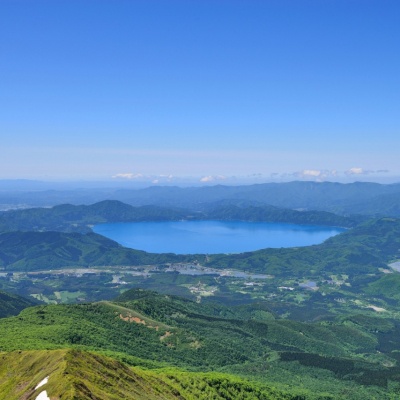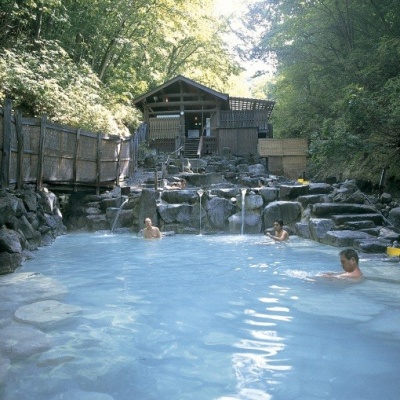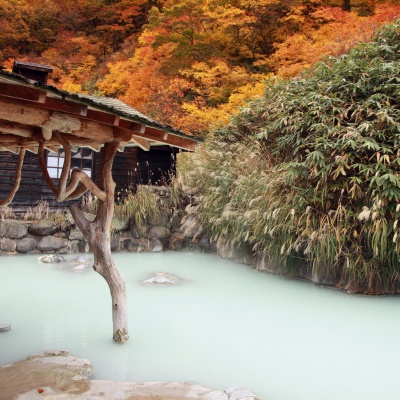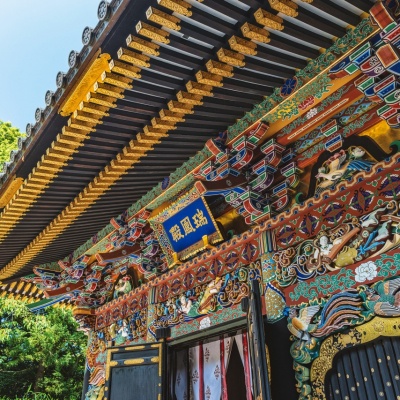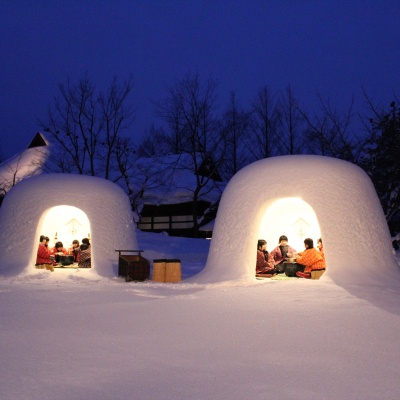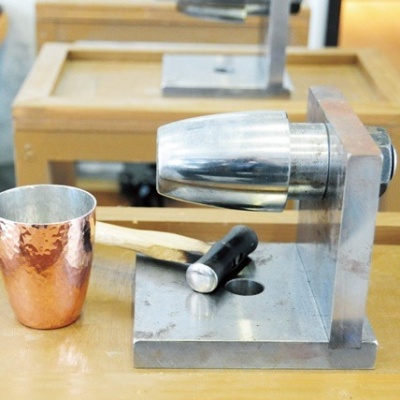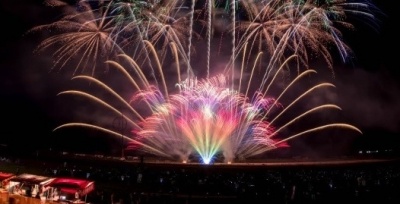3 days/2 nights based in Iwaki Yumoto Onsenkyo [Base! Tohoku]
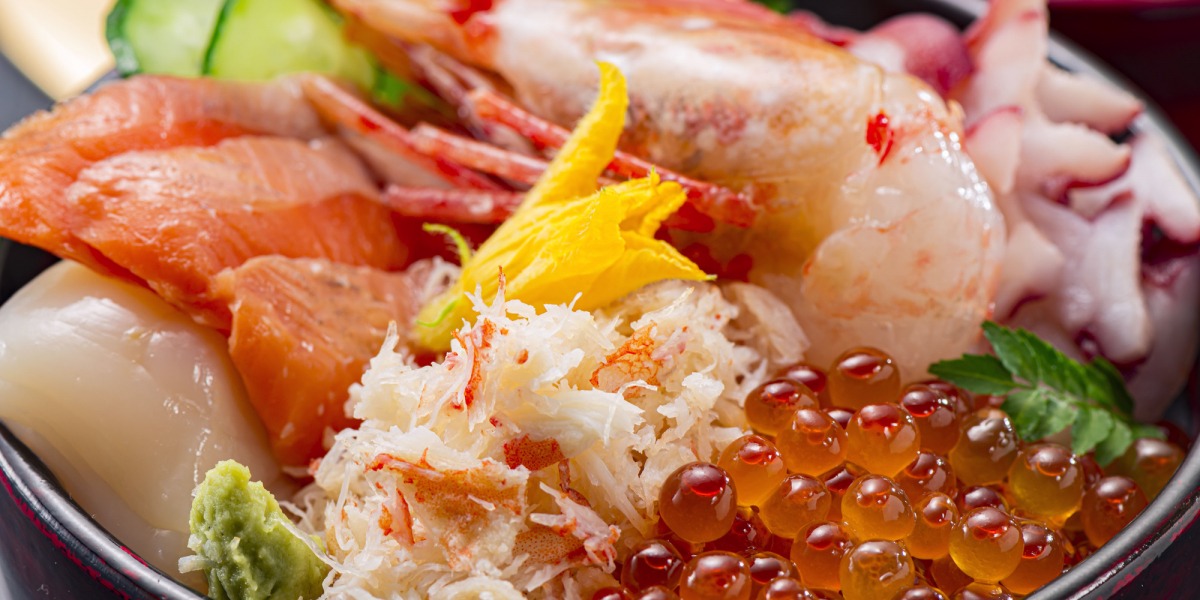
A little over two hours from Tokyo, a single train ride (express train) brings you to Yumoto Station, which is already a hot spring resort town.
There are plenty of activities for both adults and children to enjoy.
START
Day1
Aquamarine Fukushima (Environmental Aquarium)
An aquarium with engaging hands-on experiences and a focus on the currents
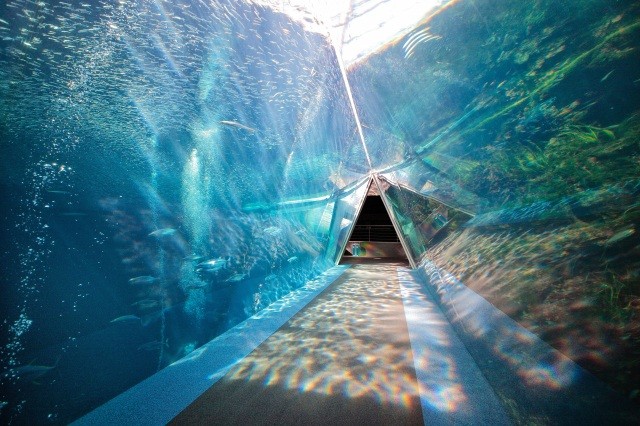
This popular spot exhibits about 800 kinds of creatures, such as colorful tropical fish, seals, Steller sea lions, as well as inshore fishes. You can try your hand at fishing and eat the fish you catch on the spot, take a backyard tour to see what goes on behind the scenes at the aquarium, or go barefoot and touch the creatures at the world's largest touch pool, Jyanome Beach. Depending on the time of year, there is also a night tour of the aquarium, a very popular event. The main attraction is the enormous triangular tunnel in the large tank. Watching the fishes swim above you will make you feel as if you are in the ocean. The event is particularly popular among families and couples.
A thematic journey in the Tohoku region:Experiences
A thematic journey in the Tohoku region:Experiences
Iwaki Lalamew
Like a fish market! A huge tourist product center where you can eat, buy and have fun
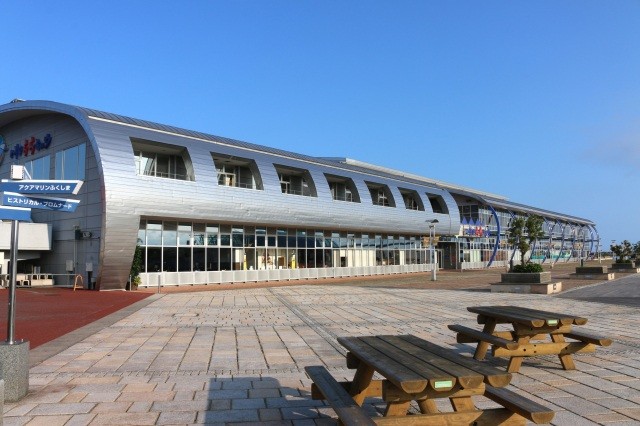
This a tourist product center that proclaims to have all the good things of Iwaki. The center is divided into a Fish Zone, BBQ Zone, Shopping Zone, Dining Zone and Place to Play. You can see things, buy things, taste things and have fun! You can have peace of mind even in the rain because all the facilities are indoors.
The Fish Zone is a market replete with three important requisites - freshness, product lineup and prices. It is also possible to negotiate prices as though at an auction. The Shopping Zone has a wide array of Iwaki items - from traditional local specialties to fun goods for souvenirs. You can eat seasonal seafood including seafood donburi (seafood served over rice) while looking at the Pacific Ocean in the Dining Zone.
There is also a spot for the arrival and departure of large sightseeing boats on the first floor. You can take a day cruise around Onahama Bay. You will find Live Iwaki Mew-seum on the second floor. You can see the situation from the Great East Japan Earthquake to reconstruction with panels and videos here.
The Fish Zone is a market replete with three important requisites - freshness, product lineup and prices. It is also possible to negotiate prices as though at an auction. The Shopping Zone has a wide array of Iwaki items - from traditional local specialties to fun goods for souvenirs. You can eat seasonal seafood including seafood donburi (seafood served over rice) while looking at the Pacific Ocean in the Dining Zone.
There is also a spot for the arrival and departure of large sightseeing boats on the first floor. You can take a day cruise around Onahama Bay. You will find Live Iwaki Mew-seum on the second floor. You can see the situation from the Great East Japan Earthquake to reconstruction with panels and videos here.
Spa Resort Hawaiians
Resort of everlasting summer! Fully enjoy this hot spring land that is so big you won't be able to take in everything!
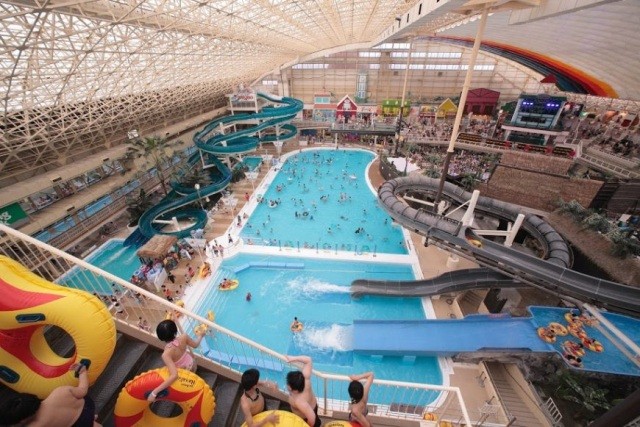
This giant hot spring theme park is also famous for the movie Hula Girls. The size of the open air bathtub is one of the largest in the world! This site is comprised of six hot spring theme parks supported by the abundant output of Iwaki Yumoto Onsen. You will need plenty of time to fully enjoy everything.
Big Aloha is truly thrilling! This is a body slider introduced in 2017 with the greatest difference in height and length in Japan. The Polynesian show by the hula girls and fireknife dancers is a must-see. You are free to enjoy yourself in many ways here! There is Japan's first flowing aquarium pool, a stylish indoor spa in the style of Southern Europe, lomi lomi (traditional Hawaiian massage), a hot spring pool dedicated to aqua exercise, a hot spring facility that recreates the atmosphere of the Edo period (1603 to 1868) and a golf course.
You will be certain to have fun here no matter who you go with - your friends, family or girlfriend/boyfriend. Spend a day enjoying this hot spring to the utmost!
A thematic journey in the Tohoku region:Experiences
Big Aloha is truly thrilling! This is a body slider introduced in 2017 with the greatest difference in height and length in Japan. The Polynesian show by the hula girls and fireknife dancers is a must-see. You are free to enjoy yourself in many ways here! There is Japan's first flowing aquarium pool, a stylish indoor spa in the style of Southern Europe, lomi lomi (traditional Hawaiian massage), a hot spring pool dedicated to aqua exercise, a hot spring facility that recreates the atmosphere of the Edo period (1603 to 1868) and a golf course.
You will be certain to have fun here no matter who you go with - your friends, family or girlfriend/boyfriend. Spend a day enjoying this hot spring to the utmost!
A thematic journey in the Tohoku region:Experiences
Iwaki Yumoto Onsen
A famous hot spring - called one of the three major ancient hot springs
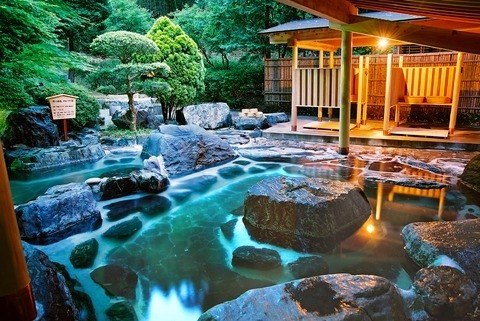
This is a famous hot spring that has been used for over a thousand years. Together with Iyonokuni Dogo Onsen and Settsunokuni Arima Onsen, it is known as one of the three major ancient hot springs of Japan. It was visited by many of the daimyo leaders in the Warring States period (1467 to 1590) in the Middle Ages. It was also visited by writers and artists without stop during the Edo period (1603 to 1868). It is a hot spring with history.
The secret to it being loved by people over such a long time is its great variety of efficacies. It has a rare spring quality for Japan. It possesses the effects of a bijin-no yu hot spring (beautiful skin, detoxification and peripheral vasodilation effects) a shinzo-no yu hot spring (lowers blood pressure and is effective on arteriosclerosis and hypertension) and a netsu-no yu hot spring (for elderly people with a strong heat insulation effect). The hot spring also has an abundant amount of hot water. It boasts an output of five tons every minute drawn from a tunnel 50 meters underground. There are a number of ryokan inns that are proud of their natural sulfur springs drawn directly from the source.
There is a relatively mild climate throughout the four seasons for Tohoku here. After taking a stroll through the elegant hot spring district, please enjoy fresh seafood caught in Onahama Port.
A thematic journey in the Tohoku region:Hot springs
The secret to it being loved by people over such a long time is its great variety of efficacies. It has a rare spring quality for Japan. It possesses the effects of a bijin-no yu hot spring (beautiful skin, detoxification and peripheral vasodilation effects) a shinzo-no yu hot spring (lowers blood pressure and is effective on arteriosclerosis and hypertension) and a netsu-no yu hot spring (for elderly people with a strong heat insulation effect). The hot spring also has an abundant amount of hot water. It boasts an output of five tons every minute drawn from a tunnel 50 meters underground. There are a number of ryokan inns that are proud of their natural sulfur springs drawn directly from the source.
There is a relatively mild climate throughout the four seasons for Tohoku here. After taking a stroll through the elegant hot spring district, please enjoy fresh seafood caught in Onahama Port.
A thematic journey in the Tohoku region:Hot springs
Day2
Abukuma Cave
Mysterious natural chambers deep underground
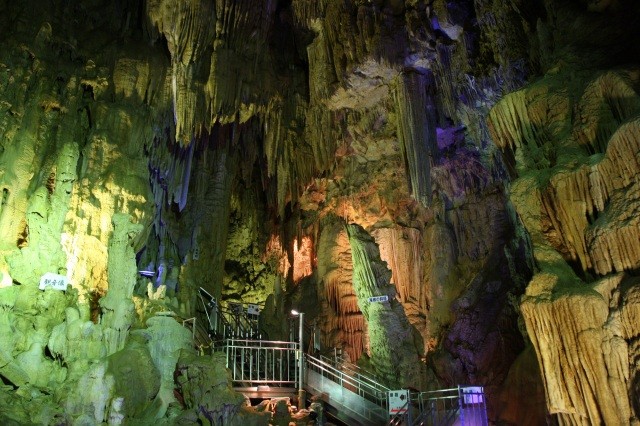
The largest hall, Takine Goten (Takine Hall), is absolutely breathtaking. The "Tsuki no Sekai," (The Moon World), the first of its kind in Japan to use a stage light control system in a limestone cave, recreates the sunrise and sunset, creating a fantastic mood. Stalactites "Kinoko Iwa" (Mushroom Rock), "Silver Frost" (Juhyo) and "Christmas Tree," are also worth a closer look.
In the Discovery Course, you can enjoy an adventure that involves an experience of crouching down or crossing a log bridge to maneuver through the natural formations.
This beautifully illuminated cave is also a great date spot and has been selected as a sacred place for lovers; ring the "vow bell" on the way to the cave for a memorable moment.
The temperature in the cave is around 15 degrees Celsius throughout the year, so be sure to dress appropriately. A jacket is recommended in the summer. The surface is slippery so wear appropriate footwear.
At Rest House Kamayama, you can enjoy a meal and buy original products including Abukuma Lotion and Wine Salt.
In the Discovery Course, you can enjoy an adventure that involves an experience of crouching down or crossing a log bridge to maneuver through the natural formations.
This beautifully illuminated cave is also a great date spot and has been selected as a sacred place for lovers; ring the "vow bell" on the way to the cave for a memorable moment.
The temperature in the cave is around 15 degrees Celsius throughout the year, so be sure to dress appropriately. A jacket is recommended in the summer. The surface is slippery so wear appropriate footwear.
At Rest House Kamayama, you can enjoy a meal and buy original products including Abukuma Lotion and Wine Salt.
Tsuburaya Eiji Museum
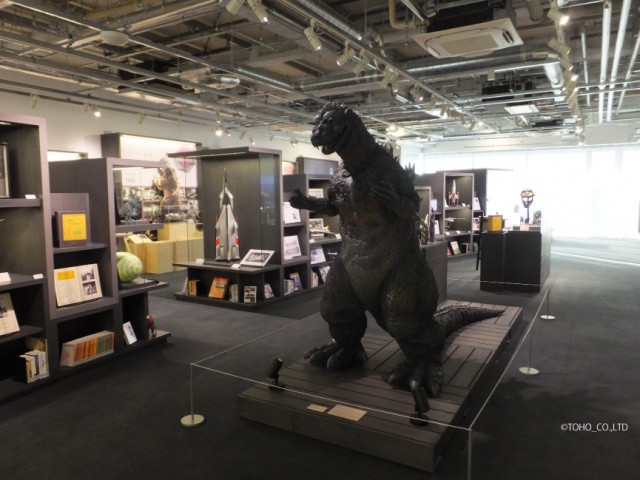
The Tsuburaya Eiji Museum honors the achievements of Eiji Tsuburaya, a movie director from Sukagawa known as the "Master of Special Effects." The museum conveys to children the importance of learning, the beauty of taking on challenges, and aims to inspire the next generation of creators. In addition to introducing Eiji's 68-year career and personality through panels and video interviews, the museum displays videos and sculptures showing how to create special effects, as well as displays of relevant books that can be used for inspiration. The facility explores the achievements of Eiji Tsuburaya and showcases the appeal of special effects.
■Eiji Tsuburaya's Chronicle Box Dividing his life into seven stages in chronological order, follow his life by taking a closer look at turning points in his life.
■Imagination AtelierEiji Tsuburaya conveys to children the importance of learning through exhibits and books from fields such as biology and mechanics.
■Studio FacilitiesThere is a miniature diorama of the Toho Studio Facilities (today's Toho Studios), where the director worked on many of his films.
■The Eiji Tsuburaya Network WallFeatures a Special Effects Relay, an interview video that unravels Eiji's personality, and the Network Wall where you can search for related works and get a glimpse into his interpersonal relationships. In the hands-on Craft Kaijudai Koshin, visitors can create their own original monster.
■Eiji Tsuburaya's Chronicle Box Dividing his life into seven stages in chronological order, follow his life by taking a closer look at turning points in his life.
■Imagination AtelierEiji Tsuburaya conveys to children the importance of learning through exhibits and books from fields such as biology and mechanics.
■Studio FacilitiesThere is a miniature diorama of the Toho Studio Facilities (today's Toho Studios), where the director worked on many of his films.
■The Eiji Tsuburaya Network WallFeatures a Special Effects Relay, an interview video that unravels Eiji's personality, and the Network Wall where you can search for related works and get a glimpse into his interpersonal relationships. In the hands-on Craft Kaijudai Koshin, visitors can create their own original monster.
Iwaki Yumoto Onsen
A famous hot spring - called one of the three major ancient hot springs

This is a famous hot spring that has been used for over a thousand years. Together with Iyonokuni Dogo Onsen and Settsunokuni Arima Onsen, it is known as one of the three major ancient hot springs of Japan. It was visited by many of the daimyo leaders in the Warring States period (1467 to 1590) in the Middle Ages. It was also visited by writers and artists without stop during the Edo period (1603 to 1868). It is a hot spring with history.
The secret to it being loved by people over such a long time is its great variety of efficacies. It has a rare spring quality for Japan. It possesses the effects of a bijin-no yu hot spring (beautiful skin, detoxification and peripheral vasodilation effects) a shinzo-no yu hot spring (lowers blood pressure and is effective on arteriosclerosis and hypertension) and a netsu-no yu hot spring (for elderly people with a strong heat insulation effect). The hot spring also has an abundant amount of hot water. It boasts an output of five tons every minute drawn from a tunnel 50 meters underground. There are a number of ryokan inns that are proud of their natural sulfur springs drawn directly from the source.
There is a relatively mild climate throughout the four seasons for Tohoku here. After taking a stroll through the elegant hot spring district, please enjoy fresh seafood caught in Onahama Port.
A thematic journey in the Tohoku region:Hot springs
The secret to it being loved by people over such a long time is its great variety of efficacies. It has a rare spring quality for Japan. It possesses the effects of a bijin-no yu hot spring (beautiful skin, detoxification and peripheral vasodilation effects) a shinzo-no yu hot spring (lowers blood pressure and is effective on arteriosclerosis and hypertension) and a netsu-no yu hot spring (for elderly people with a strong heat insulation effect). The hot spring also has an abundant amount of hot water. It boasts an output of five tons every minute drawn from a tunnel 50 meters underground. There are a number of ryokan inns that are proud of their natural sulfur springs drawn directly from the source.
There is a relatively mild climate throughout the four seasons for Tohoku here. After taking a stroll through the elegant hot spring district, please enjoy fresh seafood caught in Onahama Port.
A thematic journey in the Tohoku region:Hot springs
Day3
Yunokami Onsen Station
Truly photogenic! Japan's only thatched station building
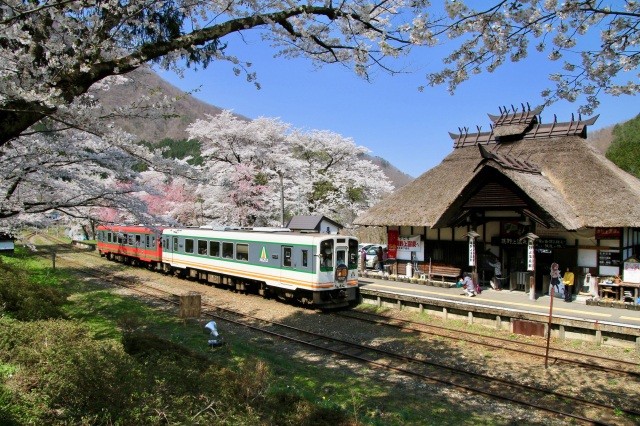
This station on the Aizu Railway Line is the only one in Japan where the station building has a thatched roof. Another charming point is the hearth that can be found in the waiting room. Here you can warm yourself and enjoy a cup of tea as you wait for your train to arrive. Not only does this open hearth add to the countrified experience, it is also useful as a means of keeping insects away from the thatched roof, as the smoke rises up to repel them. Next to the station building is the Oyakojizo-no-yu foot bath that is fed by a natural spring, enabling you to dip your feet in the warm water and relax.
The area around the station is also famous for its rows of cherry trees. In April when the cherries bloom, many people visit to see the beautiful combination of the thatched station building, together with gloriously blooming cherries and passing trains. Spring is not the only time to visit, as each season has its own unique appeals that enhance the beauty of the station: the dark green of the mountains in summer, the golden leaves arrayed across the mountains in autumn, and the deep and fluffy snow of winter.
This station is also convenient as the starting point for travel to Ouchijuku.
The area around the station is also famous for its rows of cherry trees. In April when the cherries bloom, many people visit to see the beautiful combination of the thatched station building, together with gloriously blooming cherries and passing trains. Spring is not the only time to visit, as each season has its own unique appeals that enhance the beauty of the station: the dark green of the mountains in summer, the golden leaves arrayed across the mountains in autumn, and the deep and fluffy snow of winter.
This station is also convenient as the starting point for travel to Ouchijuku.
Ouchi-juku
Feel the spirit of the old townspeople of this historic town
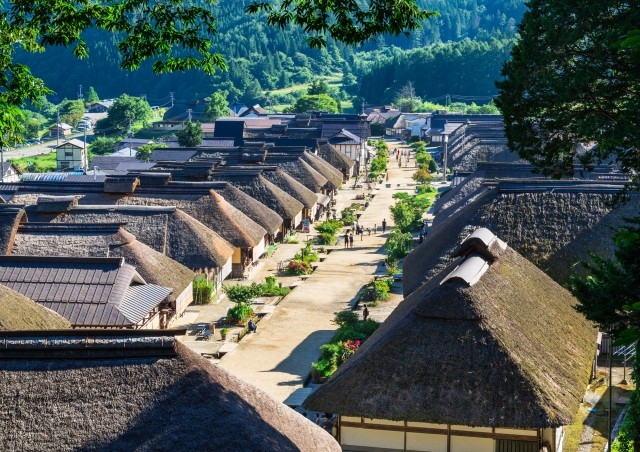
Ouchi-juku is a former post town established around the 17th century and also registered as an Important Preservation District for Groups of Historic Buildings by the Japanese government. The streets lined with thatch-roofed houses are reminiscent of the Edo period (1603-1867), and displays showing the details of life in those times down to the utensils and hearths help visitors imagine what life was like during its heyday.
Continue down the main street where you will reach the Ichi-no-Torii (first gate), of Takakura Shrine, the village's Shinto shrine. Passing through the torii gate, you will find yourself in a quiet walking area. Climb the steps up to the shrine to find a spot with a spectacular view overlooking Ouchi-juku.
There are many souvenir stores and delicious food to eat. Not to be missed is negi soba (leek buckwheat noodles), a local delicacy eaten using sticks of leek as chopsticks. It is not only delicious but also worth a picture! Other attractive foods include tochimochi, a rice cake made by combining horse chestnut and glutinous rice, and shingoro, which looks like a dumpling and is flavored with juunen (perilla) miso.
The area is also close to To no Hetsuri, a scenic gorge designated as a National Natural Monument, making Ouchi-juku a place worth visiting.
Continue down the main street where you will reach the Ichi-no-Torii (first gate), of Takakura Shrine, the village's Shinto shrine. Passing through the torii gate, you will find yourself in a quiet walking area. Climb the steps up to the shrine to find a spot with a spectacular view overlooking Ouchi-juku.
There are many souvenir stores and delicious food to eat. Not to be missed is negi soba (leek buckwheat noodles), a local delicacy eaten using sticks of leek as chopsticks. It is not only delicious but also worth a picture! Other attractive foods include tochimochi, a rice cake made by combining horse chestnut and glutinous rice, and shingoro, which looks like a dumpling and is flavored with juunen (perilla) miso.
The area is also close to To no Hetsuri, a scenic gorge designated as a National Natural Monument, making Ouchi-juku a place worth visiting.
Maezawa Magariya Shuraku
Come into contact with the wisdom of the snow country where houses and stables are one in a secluded community
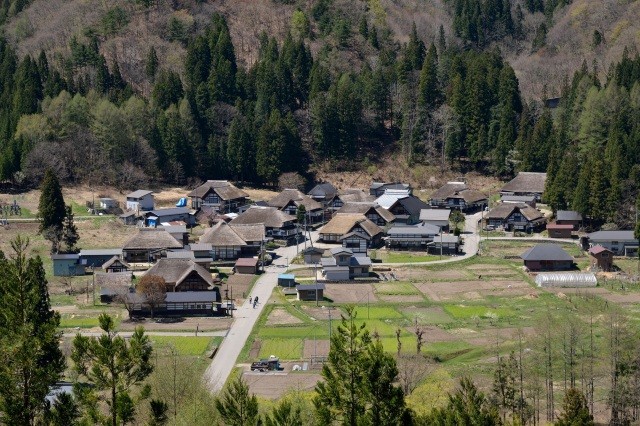
It is said by the local people that Maezawa Magariya Shuraku is a community opened by Aizu warriors in the Middle Ages. It has also been selected as an important traditional architectures preservation district of Japan.
The community suffered a large fire that destroyed all its homes in 1970. They were then rebuilt simultaneously by the same group of carpenters. This gave birth to a unified landscape. The magariya (bent houses) are dwellings bent into a L-shape as their name implies. The cows and horses indispensable for life (farming and transportation) lived in the protruding part of the homes at the front. The back of the buildings where were the farm horses that were once cherished like a member of the family and people lived in the same place as a living space.
There are 19 traditional houses, including 13 magariya, in the community. It still now preserves an original landscape of Japan. Even today, this is a place where local people actually live. Therefore, you cannot enter the premises or dwellings. Please visit quietly while observing your manners.
The community is home to the Maezawa Shuraku Museum facility where an actual magariya is used to be able to experience the old life of a farmer by entering inside, a soba noodle restaurant and an old private home cafe.
The community suffered a large fire that destroyed all its homes in 1970. They were then rebuilt simultaneously by the same group of carpenters. This gave birth to a unified landscape. The magariya (bent houses) are dwellings bent into a L-shape as their name implies. The cows and horses indispensable for life (farming and transportation) lived in the protruding part of the homes at the front. The back of the buildings where were the farm horses that were once cherished like a member of the family and people lived in the same place as a living space.
There are 19 traditional houses, including 13 magariya, in the community. It still now preserves an original landscape of Japan. Even today, this is a place where local people actually live. Therefore, you cannot enter the premises or dwellings. Please visit quietly while observing your manners.
The community is home to the Maezawa Shuraku Museum facility where an actual magariya is used to be able to experience the old life of a farmer by entering inside, a soba noodle restaurant and an old private home cafe.
Mizuhiki Magariya Shuraku
Experience the appearance of a simple thatched roof home community
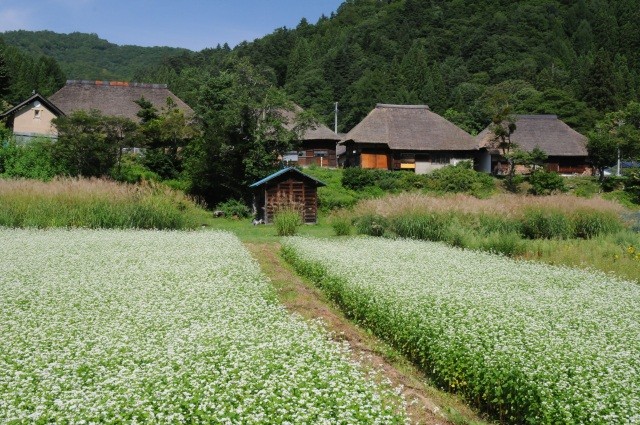
There is a theory that the origins of the Mizuhiki Shuraku community come from when hunters attracted by the good spring waters started to settle here. The tasty spring water still today wells up beside Yamagami.
All the homes in the community were burned down by large fires in 1886 and 1896. Nevertheless, five thatched roof homes rebuilt after the great fires still remain along the old road.
This community is not a tourist destination. Therefore, there is no parking lot. Please quietly experience the seasonal features of the mountain village and the appearance of the community surrounded by forest and water.
All the homes in the community were burned down by large fires in 1886 and 1896. Nevertheless, five thatched roof homes rebuilt after the great fires still remain along the old road.
This community is not a tourist destination. Therefore, there is no parking lot. Please quietly experience the seasonal features of the mountain village and the appearance of the community surrounded by forest and water.
GOAL
